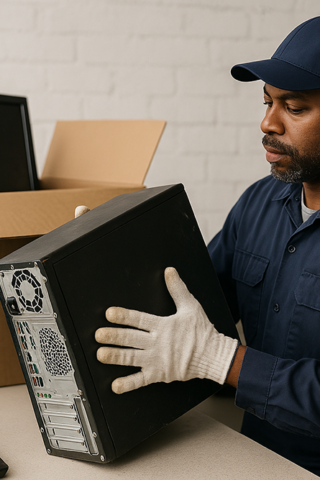RE Journals, JANUARY 26, 2021
The logistics industry strives to make the manufacturer-to-retailer-to-consumer supply chain as smooth as possible, and they’ve gotten very, very good at it. But can the same be said for reverse logistics? How efficient is today’s return process and are their opportunities to tighten that up?
E-commerce returns are more than double those of brick-and-mortar retailers. Online stores have signaled that they are willing to eat the cost of additional shipping if it will provide a level of convenience to a customer who wants to buy five shirts, try them on at home and send three back.
Over time, efficiencies will emerge in these “round trip” transactions (retailer to consumer back to retailer) through the use of better data collection, automation, AI and other best practices. They have to, because the high return rate among online shopping is unlikely to go away.
“If I want more sales from you as a consumer, I have to make sure that that return experience for you is seamless. If it’s full of friction, your probability of buying more stuff from me is less,” said Geoffrey Kasselman, senior vice president/partner-workplace strategy at CRG. “As most salespeople know, the second, third, fourth and fifth sale is easier than the first sale, so it’s more important to retain you then attract you to begin with.”
One tool that most large retailers already use is a CLV (customer lifetime value) score. If one customer reliably purchases five items per year from a retailer, he or she will have a higher CLV than another customer who buys three, returns two and harangues the customer support line for an hour every time. In order to retain those high-value customers with better CLVs, retailers will treat them differently. This could mean the return process is free, or faster or more hands on.
Like the rest of the world, this practice relies increasingly on more data. It’s not just consumer behavior, however. Data collected at every point along a product’s travels—from warehouse to a consumer’s home and back—is a valuable key in making the reverse logistics process more efficient.
Kasselman believes that those online sellers that provide the easiest and most efficient return process will perform the best. They will still provide the convenience of return that retains customers, but do so in a manner that protects their bottom line. Defining those best practices, however, is tricky as the industry is still evolving.
“Your brand isn’t what you say it is, it’s what others say about it when you are not there,” said Kasselman.
Starting from the consumer side, convenience and efficiency can mean several different things. Perhaps a pre-paid return label is included with every purchase just in case there will be a return. Maybe the retailers will send professional packers or even automated drones to retrieve the item.
Right now, UPS, FedEx and other package handlers are delivering thousands of boxes to door fronts all over the world—with the driver walking back to the truck empty handed. What if this bit of inefficiency were used as an opportunity to expedite returns? Drivers delivering two houses away from someone looking to return an item can incorporate that stop into their route and bring added value to the retailers.
Arriving at a warehouse is by no means the end of a returned items journey. Can the product be restocked as is? Does it have to be repackaged, cleaned or repaired? If not, can it be sold to a wholesaler or broken down and sold for parts?
“This process, or portions of it, are hard to automate at scale, and automation infrastructure is expensive,” Kasselman said. “So while more automation is occurring, to date it is the exception and not yet the rule.”
Into this void, cottage industries have begun popping up to handle, store and redistribute returned items. We are starting to see more and more dedicated return warehouses, which include refurbishment facilities, in strategic locations. Third party companies are setting up automated centers that retailers can contract with, sending them a list of SKUs and restocking criteria for each product.
“Third-party vendors are able to invest in automation equipment and infrastructure while passing a portion of the cost through to their returns clients on an outsourced, scope-of-services contract basis,” Kasselman said. “Thus, their retailer clients don’t need to make such a capital-intensive investment.”
We’ve already seen the BORIS phenomenon (buy online, return in store) take hold with brick-and-mortar outlets such as Kohl’s partnering with Amazon as a dedicated return location. There may soon be a time where third-party reverse logistics experts co-locate with retail outlets or wholesale retailers to facilitate the operationally efficient “round-trip” experience.
Shrinkage is itself shrinking as every year as the number of returns that are either lost or damaged enough that they can’t be monetized grows smaller and smaller. Long-term, this trend will continue, aided by better data collection and new technologies. IoT-enabled devices such as “perfect-fit” mirrors and 3D-printers in the home will cut down on “round trip” purchases. It will be interesting to see where reverse logistics goes from here.








